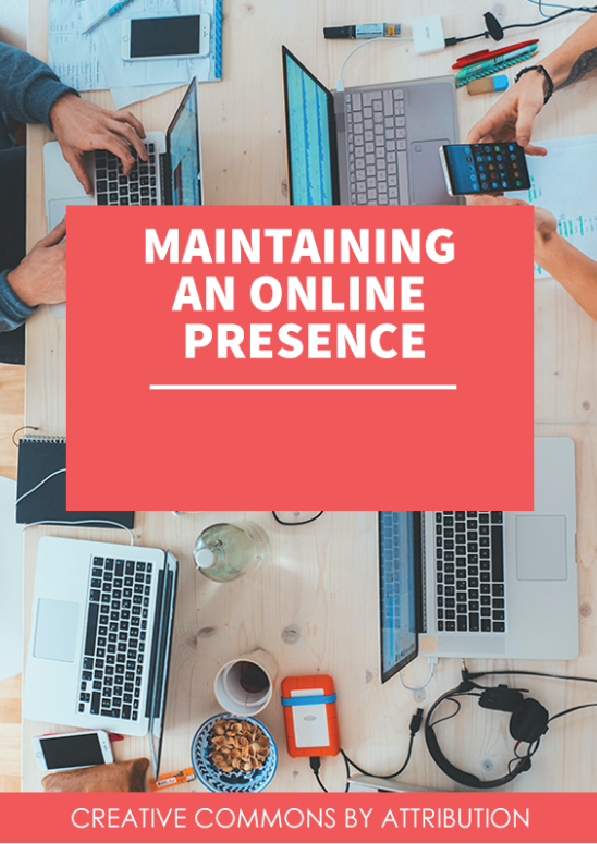Creating consistent design elements across web platforms is at the heart of maintaining an online presence. Every business, not-for-profit and volunteer organization requires intentional designers to think across website and social media channels. The ability to communicate clearly and effectively in written, verbal, visual, and interpersonal contexts is vital for the success and advancement of maintaining an online presence.
This textbook will take you through these stages from planning, development, implementation to completion. The first part focuses on defining an online presence as well as discusses some of the privacy and security implications that exists for businesses online. The design development is discussed in the second part where professional branding meets design thinking. Using content to drive layout and human-centred design strategy, part 3 of this textbook addresses key ideas in website design. Finally, best practices for integrating a business brand and creating community in the social media landscape are discussed in part 4.
A potential customer will often have their first experience with you online presence. If it is not communicated clearly and promoted effectively to the right audience, it will not become a reality. For an design to move from concept to completion requires many stages (see Figure 1), almost all of which require clear communication and effective design skills.
Maintaining an Online Presence introduces the key elements of digital privacy, branding, website creation, collaboration, and research skills needed to communicate an effective look an feel for a variety of purposes and audiences.
When you hear the term “online presence,” what comes to mind? Perhaps you think of a brand, copy writing, a social media channel or business website. And you are correct. However, an online presence is much more than that: Creating an intention around the communication style and “look and feel” of a brand is at the heart of creating and maintaining a businesses’ online presence.
It also includes determining a privacy officer, how and what type of content must be produced, attention to file management and image creation/sourcing. It includes determining on which platforms and channels the brand communications and the intricate authenticity in those spaces.
We might define maintaining an online presence, then, as using various modes (design, written, visual) of communication of a businesses’ voice to help connect customers to the problems an organization is trying to solve.
Why is Creating and Maintaining an Online Presence Important?
An online presence is “transactional” – it entails purpose-driven communication (informing, instructing, persuading) between a target audience (customer) and an organization (brand). An online presence can be considered through the creation and maintenance of design systems and content, such as:
- Creating a marketing one-liner
- Technical privacy policy documents
- Documentation of project scope (i.e. a website development plan)
- Development of branding materials (i.e. logo, header images, photos of staff, etc.)
- Sketching a content wireframe for a website
- Writing and reviewing website content
- Creating a website designed with accessibility and usable design patterns
- Planning social media marketing
- Lead-generation
- Sharing on social media
Thus, it is loosely a “designed” form of marketing communication that requires practitioners to have a heightened awareness of design standards (rules and expectations), technical know-how and rhetorical situations (audience, purpose, context) in which they are communicating.











